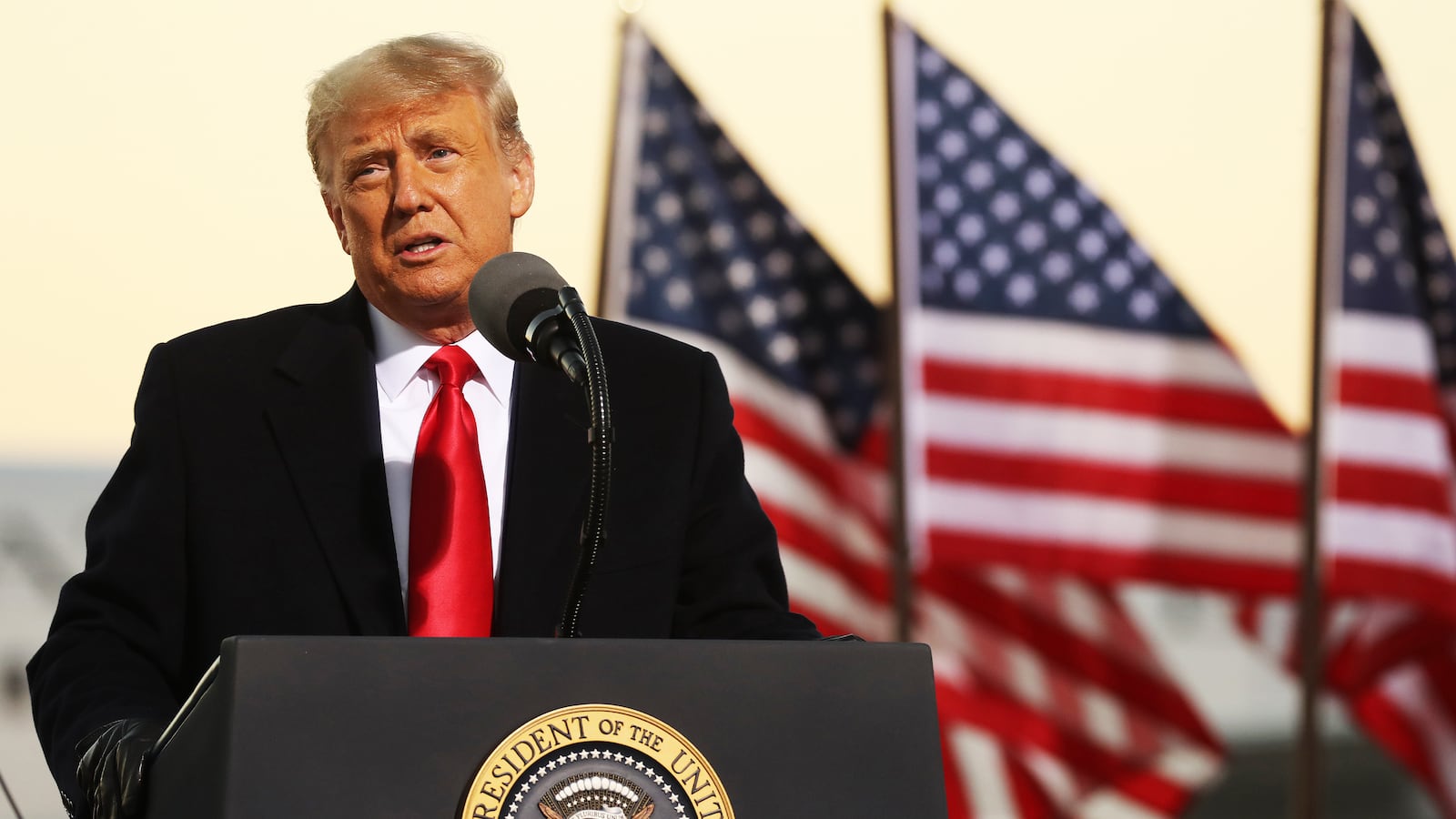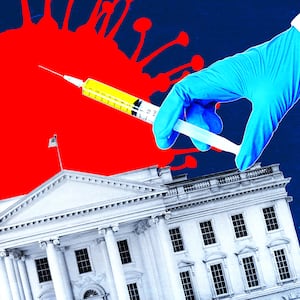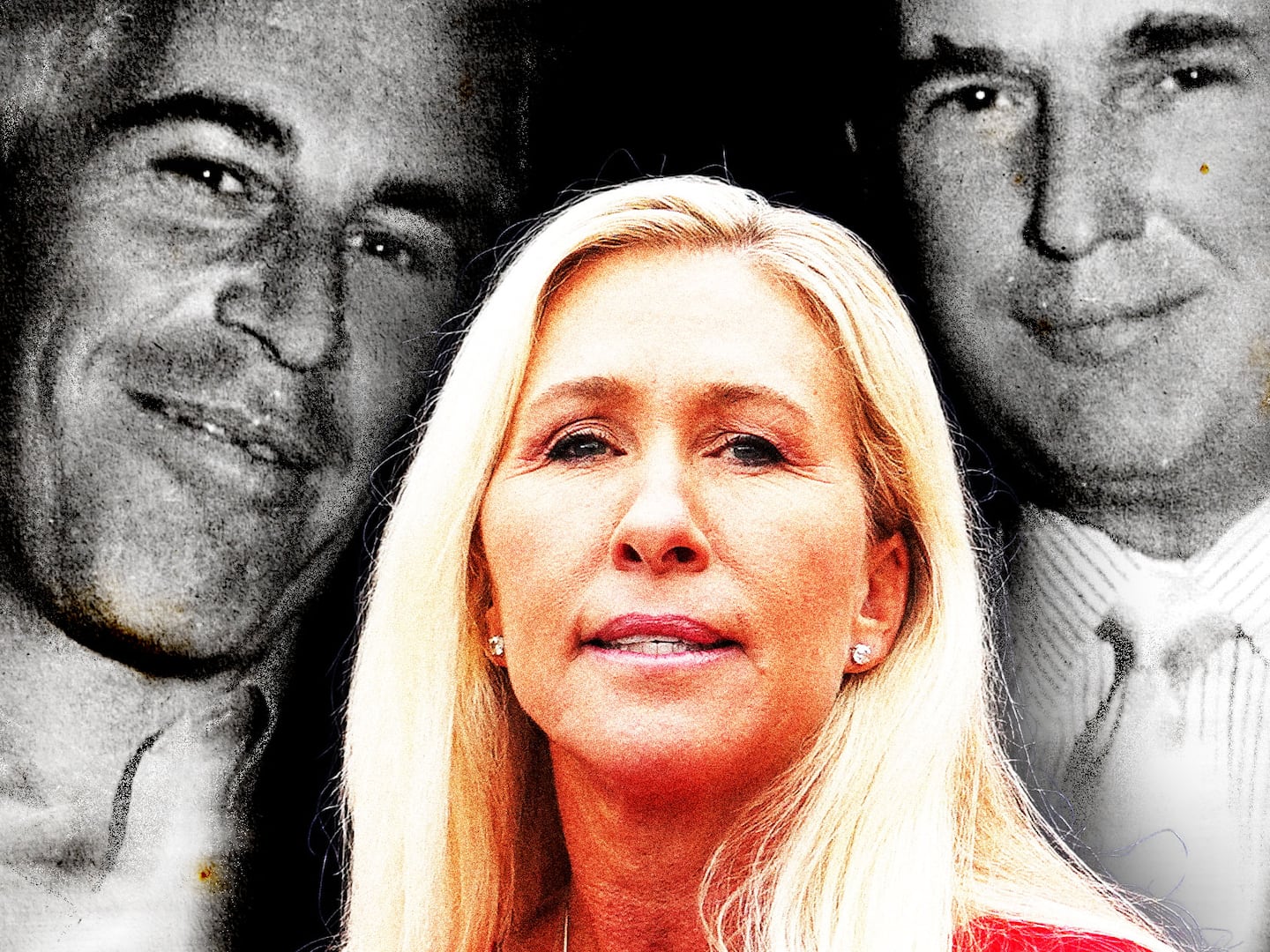President Donald Trump’s prospects for re-election likely rest on convincing voters that he has succeeded in containing the spread of COVID-19 even as the virus ravages the country and creeps back into communities.
It’s a remarkable gambit: Tell the public not to believe the carnage playing out before them. And it’s one made even harder by recent events. Over the past week more than 500,000 Americans tested positive for COVID-19, more than 230,000 have died during the pandemic, and 47,000 are hospitalized because of complications from their infection.
It didn’t have to be this way, both for the president and the country.
While COVID-19 surprised the world with the speed at which it reproduced itself and infected others, top health officials—both current and former—concede that Trump and some of his advisers made critical mistakes along the way that not only allowed the virus to spread uncontrollably but also put Trump in the precarious political position in which he now finds himself.
Officials say that while there were several unknowns about the virus in the first days of the worldwide outbreak, Trump and the White House did, in fact, understand the risk it posed to Americans. They just hid it from the public. Although there were plenty of warnings from national-security and health officials, the White House didn’t move fast enough to respond to a virus that had already forced Italy into a full lockdown. Trump was too slow in shutting down flights from China and Europe, too slow to ramp up testing, too slow to move the country into lockdown, and too slow to invoke the Defense Production Act to supply hospitals with medical supplies and personal protective equipment, those same officials said.
“The administration thought it reacted early to blocking travel from China in the early days but it was almost too late. The virus was already here. That was the biggest mistake—not moving quickly enough. The breaking point was really that early,” said one senior health official. “We went from a full-on defense to an ‘It’s here, what do we do?’ mentality.’ We haven’t been able to reverse course since then.”
But the most severe misstep didn’t have anything to do with making swift national-security decisions, officials say. The virus was able to plow through communities in large part because, from the outset, the White House tried to handle the federal government’s response on its own, cutting out essential input from doctors and scientists and other top officials who had experience handling major natural disasters. Normally, officials said, the White House allows health agencies or other branches of government—including the Department of Homeland Security and the Federal Emergency Management Administration—to take the lead in handling the response to national emergencies. In those situations, the president is briefed and offers counsel but does not dictate how they are handled in absolute terms. That wasn’t the case for Trump and COVID-19.
“The White House took over operations, which it never should do. The task force should have always been the policy-making entity, driving policy demands down to the agencies which have the expertise to execute that,” said Juliette Kayyem, a former assistant secretary in the Department of Homeland Security. “The White House doesn’t have the bandwidth. We didn’t spend that time either determining what assets we had, resupplying the stockpile, and guiding manufacturing.”
One senior official described the mistake more succinctly. It was, the official said, “arrogance” that made the president believe that he could handle the pandemic on his own, which in turn caused major delays in the distribution of testing, personal protective equipment, and ventilators. The president and his advisers, including his son-in-law, Jared Kushner, decided they would run the response like a business, that official said. And Trump was the boss.
“It’s one thing to say, policy-wise, you may bring outside-the-box thinking; it’s another thing to believe that you can execute on that in a nation as big and as vast and the pandemic being that scary,” Kayyem said. “There was no understanding of how a pandemic response works.”
Asked for comment on the president’s response to COVID-19, White House spokesperson Sarah Matthews said, “President Trump acted early and decisively in the fight against the coronavirus... He has led a historic, whole-of-America coronavirus response.”
Six years ago, when the country was confronting the Ebola outbreak, then-President Barack Obama recognized the need to set a coordinator with one foot in the Oval Office and one foot out, appointing a so-called czar to effectively oversee operations.
Trump eventually made a similar decision. But instead of finding someone whose sole focus would be the pandemic, he appointed Vice President Mike Pence to form a coronavirus task force. Pence has been complimented by governors and health officials for the job he’s done. But his plate was already full. Making matters worse, he didn’t have the backup of a team inside the White House to help support the science. Trump had fired the entire pandemic-response team within the National Security Council in 2018.
While Trump delegated almost all the grunt work to others, he refused to relinquish the spotlight. He held press conferences almost daily, during which—at one point—he speculated wildly about whether injecting bleach into the body would be a good way to kill the virus. The moment became iconic for its inanity. But the ripple effects were quite serious.
“From that point on, we knew that the response to this virus was going to have to entail a large countermessaging campaign… efforts to fight back against the president’s rhetoric,” said one senior health official working with the coronavirus task force.
Officials say Trump’s frequent appearances severely hindered the administration’s ability to push out a clear message. From the beginning, Trump tried to conceal the severity of the virus from the American people. “This is deadly stuff,” Trump told Bob Woodward in a February interview, even as he explained that he didn’t want to “create panic” and so would “play it down.”
“There wasn’t the level of urgency I expected. Most people thought [Trump] didn’t understand or he wasn't giving it an appropriate amount of attention,” said Elizabeth Neumann, former assistant secretary at the Department of Homeland Security for counterterrorism and threat prevention during the Trump era. “In reality, he chose to downplay it because he didn’t want to affect the economy he wanted to run on.”
Trump’s preoccupation with the public-relations elements of the pandemic response compelled him to make decisions at odds with what public-health professionals wanted. From the start, officials said, Trump pushed back on recommendations from the Centers for Disease Control and Prevention and from Anthony Fauci, the nation’s top infectious-diseases specialist, and Deborah Birx, the coordinator of the task force, to press forward with recommendations to lock down certain portions of the country experiencing worrying test positivity rates and push guidelines on mask-wearing and social distancing.
“There was a basic pushback that this thing could hit us the way it did other countries,” said one senior official. “And that messaging was coming from the White House and extended outside the administration.”
Trump also resisted efforts to promote mask-wearing, even as it became clear that it would help significantly mitigate the spread of the virus.
“We should have had a united front across the country on this and we would be light years ahead of where we are now—which is almost even worse than where we were at the beginning of the pandemic,” said Olivia Troye, a former senior adviser to the task force who endorsed Biden shortly after departing the Trump administration. President Trump, she added, “made a choice early on—a choice that we all continue to suffer from with our communities once again suffering, more loved ones getting sick now, and lives continuing to be lost every single day.”
It wasn’t until March 18 that the Federal Emergency Management Administration (FEMA) stepped in to streamline matters. But, by that point, there was another plan brewing inside the White House.
President Trump tapped Kushner to head up an operation to deliver hospitals what they needed for medicines and gear. That operation, Project Airbridge, crumbled soon after. Its staffers said there was no leadership or understanding within the team of how to efficiently procure supplies. Kushner’s testing plan—the campaign to enlist pharmacies to set up drive-through testing sites—also failed to meet expectations.
Despite a significant lag in testing, Trump moved to reopen the country, threatening state leaders with financial penalties if they didn’t move to fully open businesses and restaurants. Officials say the president moved too quickly before fully flattening the curve. By that point, however, some Americans had bought into the rhetoric that the virus was nothing to worry about; or, at least, less damaging than maintaining social-distancing practices.
“Trump tapped into this brewing frustration among certain parts of the population that were fed up and wanted to get back to work,” another senior official said. “And so the idea was we either pushed the lockdown message or we tried to appease people and open up in a safe way. But when we did that, we saw people were reckless.”
A predicted spike in infections came when states began opening up over the summer. Despite that, Trump aggressively pushed schools to reopen for the fall semester. Whatever power coronavirus task force officials felt they may have had at the beginning of the pandemic was completely wiped away by the fall.
Publicly, Trump has given himself top scores on his handling of the pandemic, save for one component: His ability to spin it. Asked if he’d do anything different, he’s emphatically said no.
Privately, he has said the same. The Daily Beast asked seven Trump advisers and confidants who’ve spoken to the president about the virus throughout the crisis if they recalled any moment during which Trump expressed even a sliver of regret. All of the sources said no. One person close to the president said he did make sure to mention he wasn’t getting enough kudos from enough people. One senior administration official literally laughed at the idea that Trump would show any contrition over his management of the crisis, and rhetorically asked: “You’re talking about this president, right?”
Among the president’s political lieutenants and the Republican donor class, there is widespread doubt that Trump will emerge victorious in this election, and many of them are placing the blame squarely on his management of the deadly public-health crisis. With that blame has come contemplation of what could have been. Trump’s confidants recognize that it is silly to expect him to suddenly become a different person and president. But there is a prevailing belief that he could easily have defeated Biden, or whoever the Democratic nominee was, had he simply acted more swiftly and seriously early on.
“The biggest regret is that the president acted so much like himself during the pandemic,” said a senior Trump administration official who works closely with the COVID task force. “There is nothing that I’m aware of that could have been done to make that un-happen… I fear that his [coronavirus] response will be in the beginning of his obituary.”










